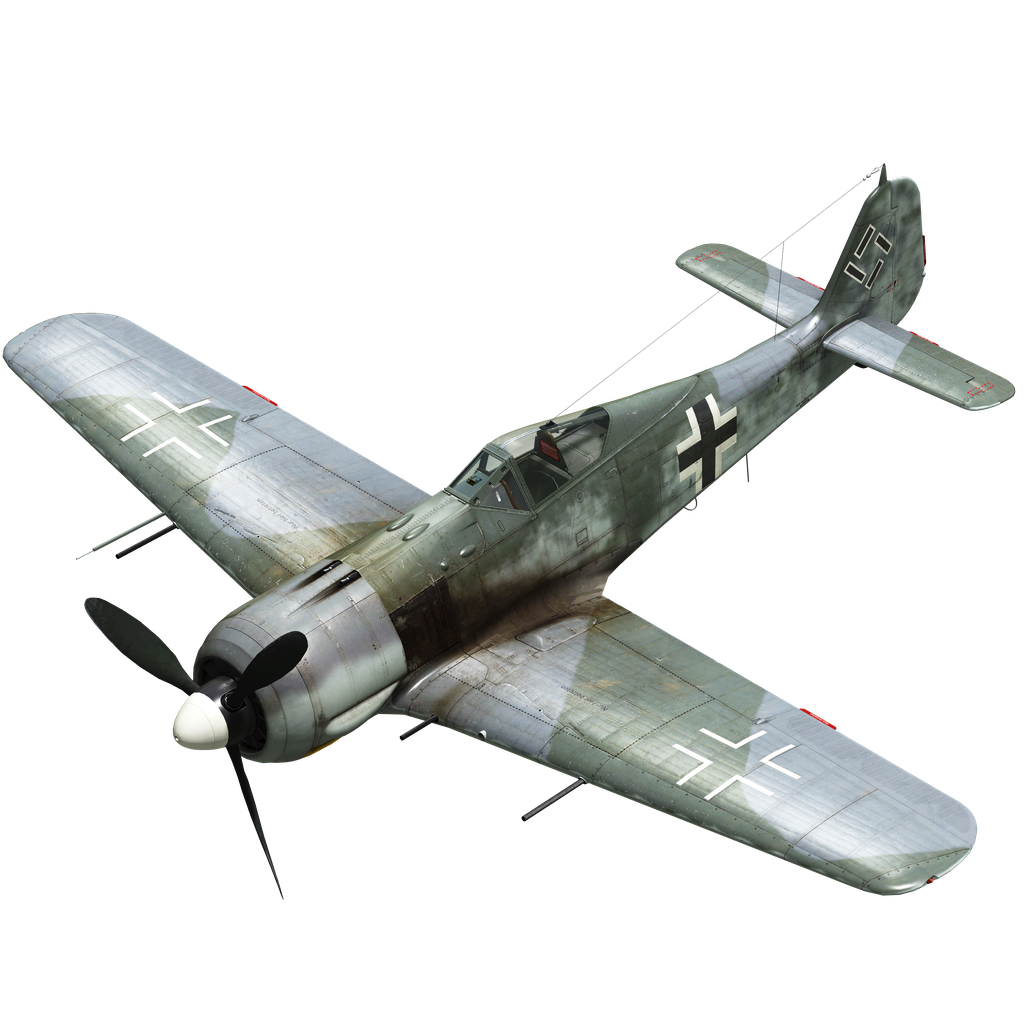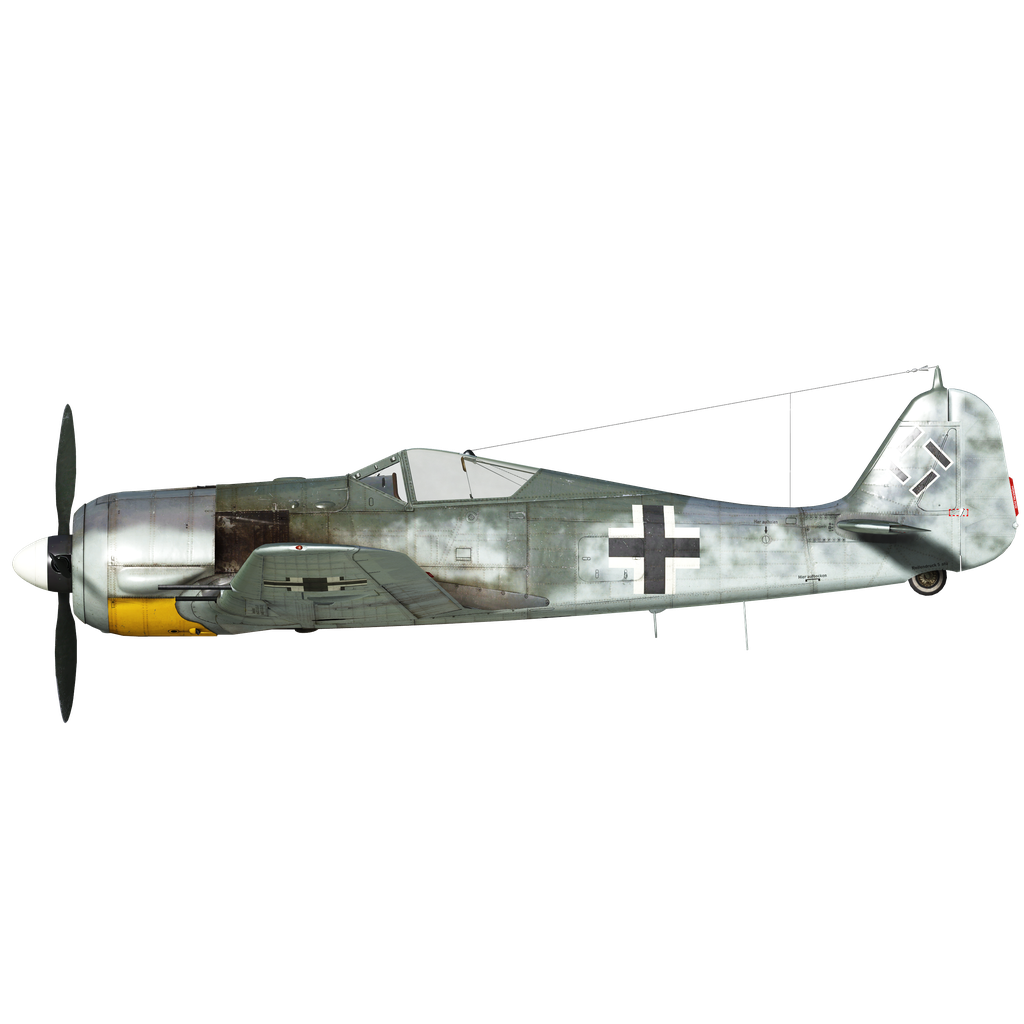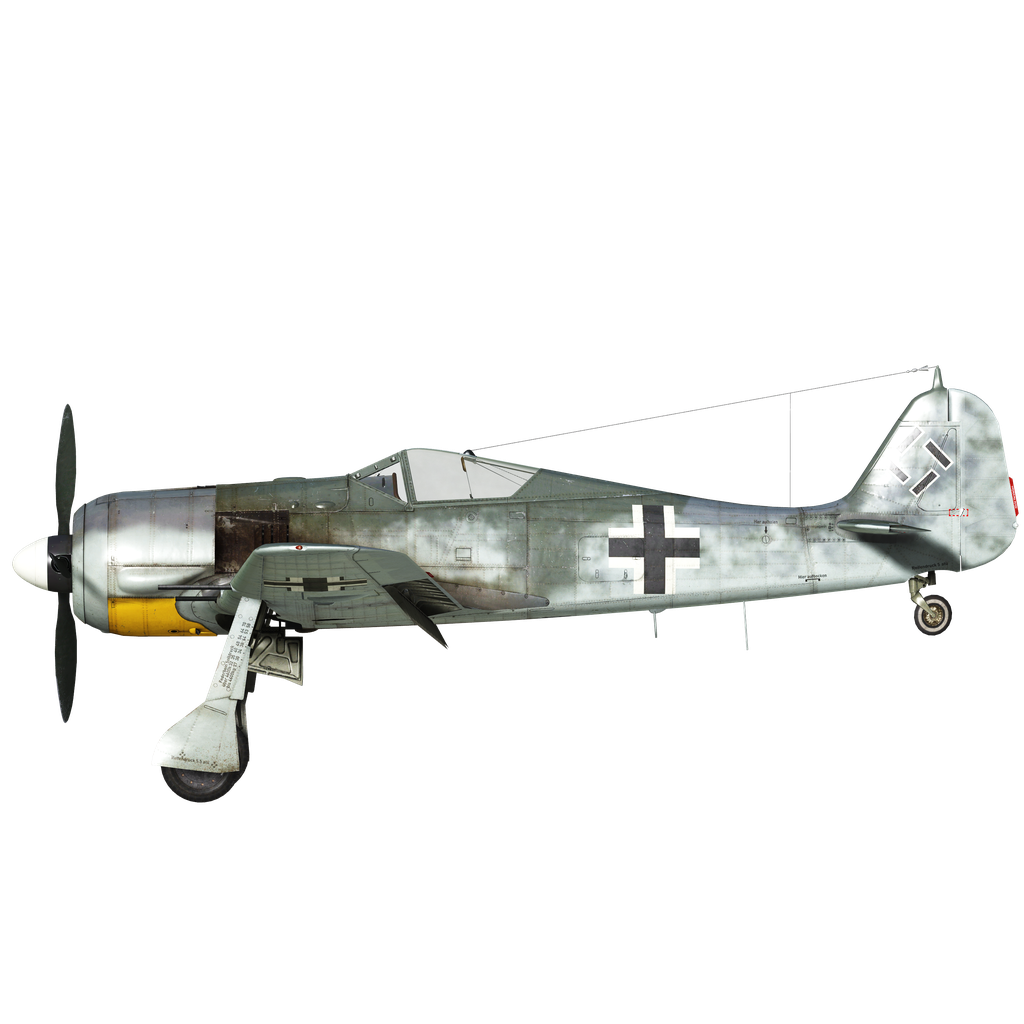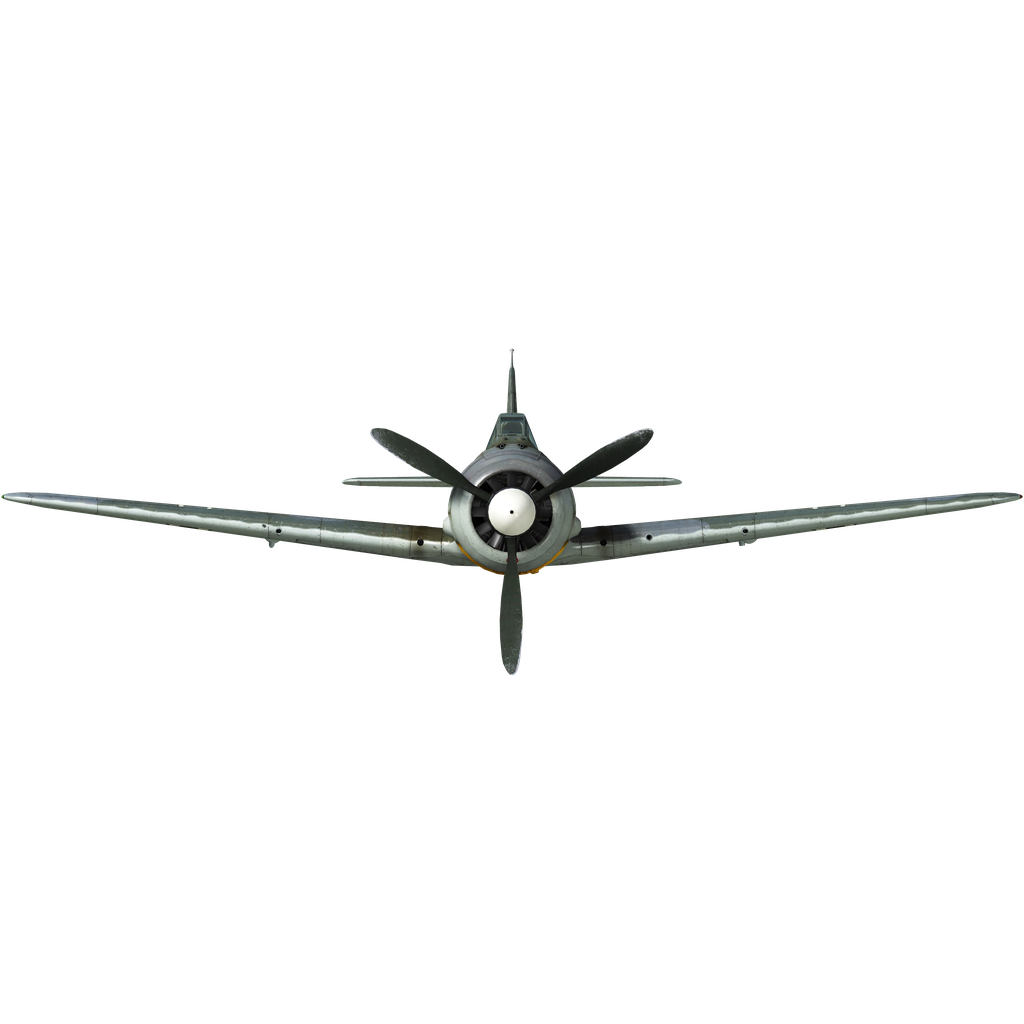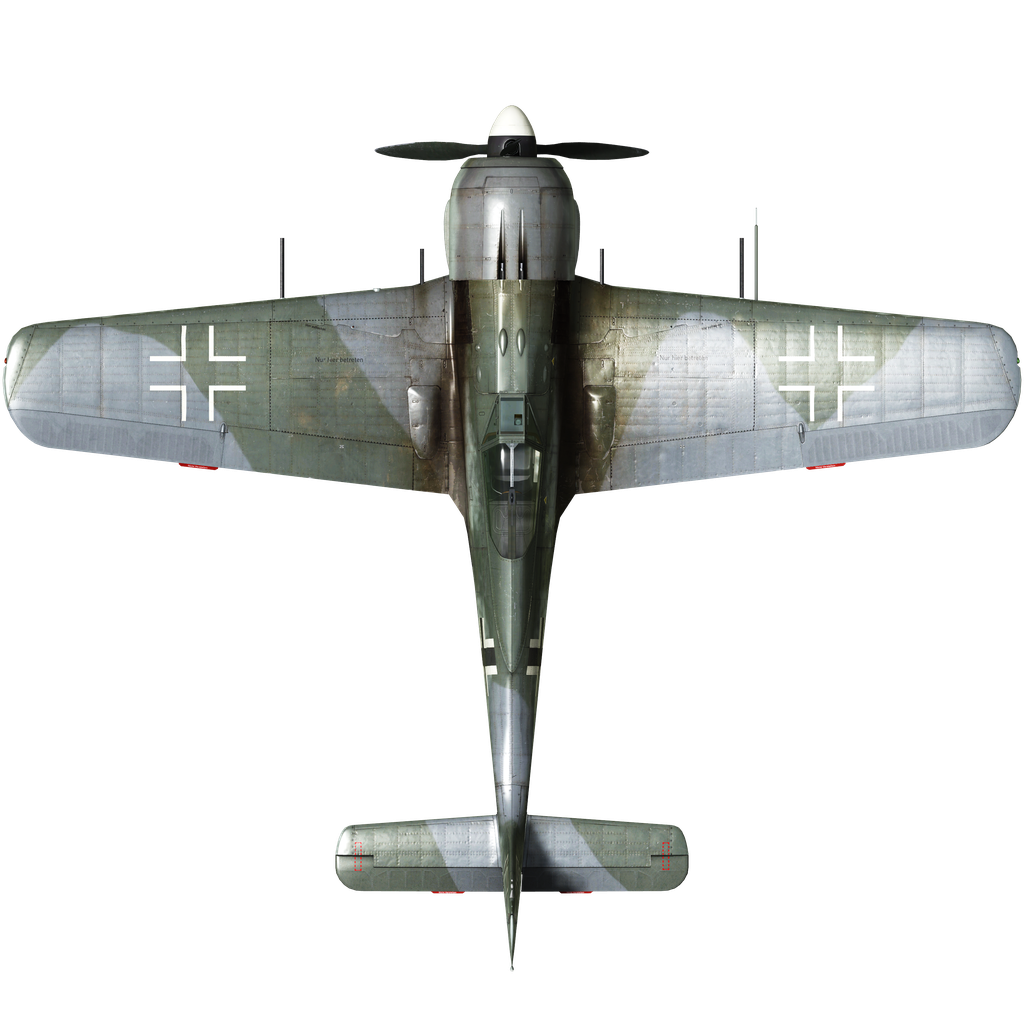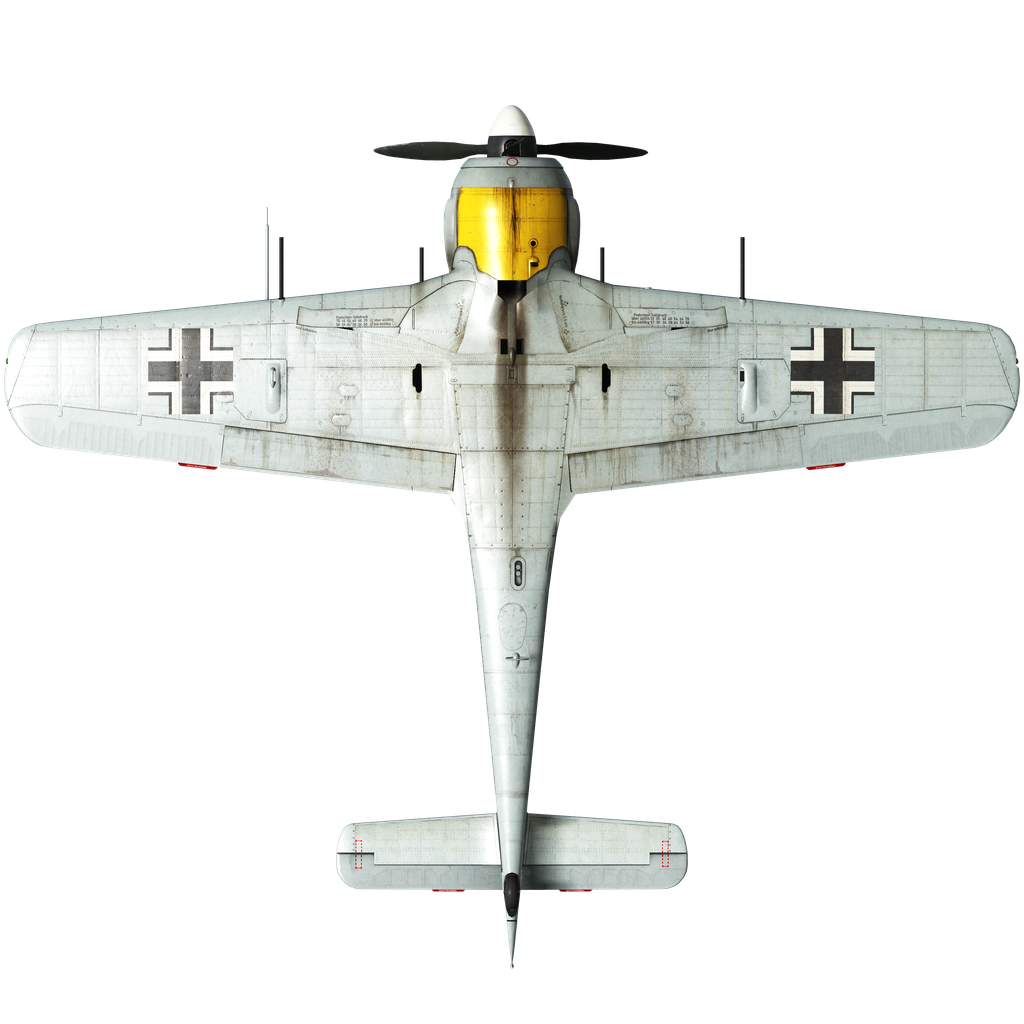In 1938, the Luftwaffe Technical Directorate, disappointed by the debut of the first Bf 109 series in Spain, asked Focke-Wulf to design a new fighter. A distinctive feature of the new aircraft, whose prototype took to the skies on June 1, 1939, was the use of an air-cooled engine and a large convex cockpit canopy with a minimum of metal binding parts. The aircraft was characterized by good controllability and low stick loading. From the autumn of 1940 to 1943, aircraft from the A-0 to A-5 series were delivered to combat units.
In the spring of 1943, the ever-increasing takeoff weight of the aircraft began to affect its performance. It was decided to change the armament, for which the wing design was changed. The new wing was tested on Fw 190 A-5/U10 No. 861, which became the prototype for the new series.
The start of production of the Fw 190 A-6 series was planned for April 1943, but massive Allied air raids delayed it until late May - early June. The A-6 was distinguished by a new wing, in the outer part of the wings MG 151/20 cannons were mounted — for this, it was necessary to create convex fairings on the underside of the aircraft. The aircraft were equipped with reinforced wheels of the main landing gear and a Robot camera gun. If necessary, all A-6 series aircraft could be equipped with an ETC 501 bomb rack, which together with the ER 4 adapter beam made it possible to carry four SC 50 (SD 70) bombs.
The only factory modification of this model was the A-6/U3 attack aircraft (fighter-bomber), which entered service with "assault" detachments and groups. It had three bomb racks, one ventral for 500 kg bombs and two underwing for 250 kg bombs, as well as additional armor. Attack modifications were equipped with a system to increase engine power, using an additional injection of C3 fuel (with 96 octane) for a short-term emergency increase in maximum speed at altitudes below 1000 m.
-
A-6/R1: armed with six MG 151/20 cannons, four of which were mounted in pairs in two WB 151 mounts under the wings instead of two wing cannons. 60 aircraft were converted;
-
A-6/R2: instead of the external wing MG 151/20, 30 mm MK 108 cannons were installed (built into the wing, as opposed to the A-5/U16). Not mass-produced;
-
A-6/R3: even more powerful (and heavier) 30 mm MK 103 cannons under the wings. Not mass-produced;
-
A-6/R6: the variant which, like the A-4 and A-5, provided for the mounting of two Wfr.Gr.21 rockets. 21 aircraft produced;
-
A-6/R2/R6: "formation destroyer", armed with two MG 17 machine guns, two 20 mm MG 151/20 E cannons, two 30 mm MK 108 cannons, and two Wfr.Gr. 21. Only one prototype built.
-
A-6/R7: armored version with conventional weapons, used in the Reich's air defense. A belly mount for a 300-liter fuel tank was often installed.
-
A-6/R8: Version with armament like the R2 (MK 108 cannon) and armor like the R7. The MG 17 machine guns were often removed. It was used for air defense and showed good effectiveness against American bombers;
-
A-6/R11: all-weather and night fighter-interceptor, sometimes with the installation of a FuG 217 Neptune radar. Typically, these aircraft used jettisonable fuel tanks mounted on an ETC 501 bomb rack;
-
A-6/R12: experimental version, a combination of R2 and R11.
A total of 1,192 Fw 190 A-6s were built.
Since the BMW 801D-2 engine was already considered unsatisfactory in terms of altitude, the A-6 was originally intended to be used as an attack aircraft. However, the aggravated situation in the skies over Germany forced us to reconsider this decision, and many Fw 190 A-6s were sent to fighter units.
Used sources:
1. W. Creen “The Warplanes of the Third Reich”, Galahad Books, 1986
2. “Wings of the Luftwaffe” Translation of V. Green’s book “Combat Aircraft of the Third Reich” by A. Firsov, 1993
3. A.N. Bear "Focke-Wulf FW190" Arsenal-Press, 1993
4. O. Rastrenin “Luftwaffe attack aircraft. Myths and Reality” journal. Aviation and Cosmonautics, No. 3, 2014
5. Materials from the site airwar.ru
